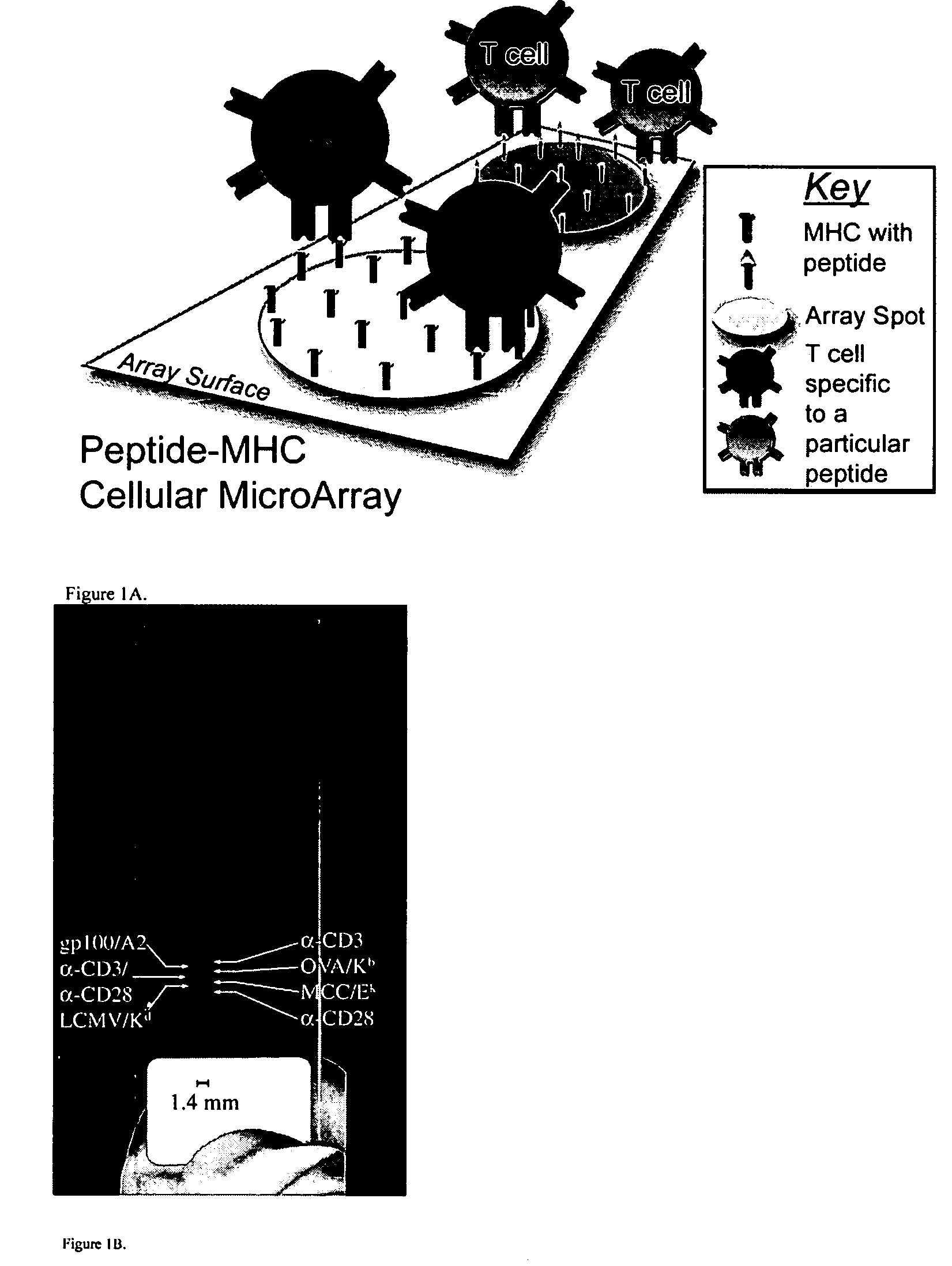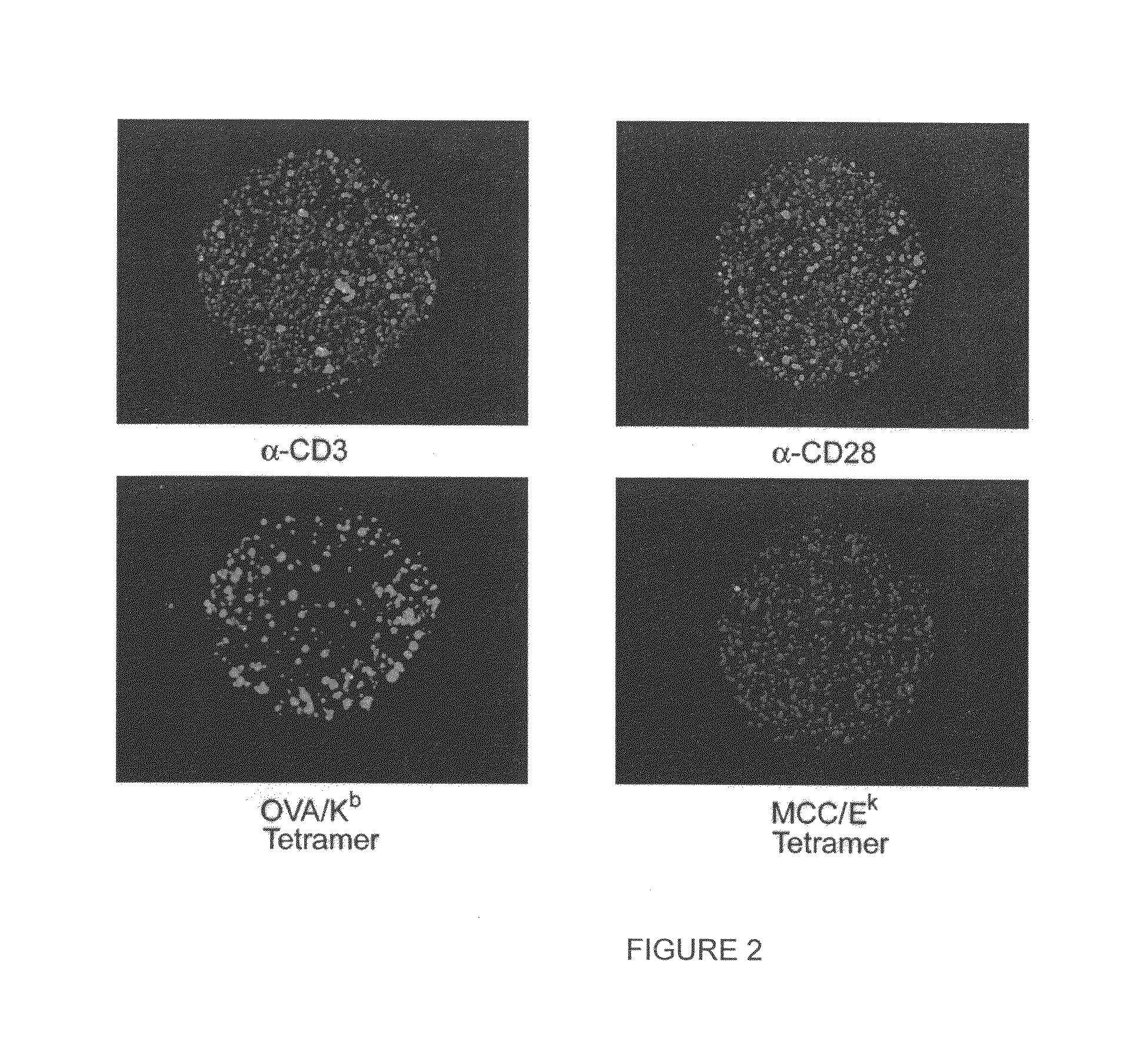MHC-antigen arrays for detection and characterization of immune responses
a technology of immune response and array, which is applied in the field of mhc-antigen array for detection and characterization of immune responses, can solve the problems of inability to label t cells with monomeric mhc-peptide complexes, current methodology, and inability to detect t cells in time,
- Summary
- Abstract
- Description
- Claims
- Application Information
AI Technical Summary
Benefits of technology
Problems solved by technology
Method used
Image
Examples
Embodiment Construction
[0024]MHC-antigen profiling arrays allow T cells to be characterized with respect to their expression of antigen receptor. The cells are arrayed on a planar or three-dimensional substrate through binding to immobilized or partially diffused MHC-antigen complexes, where the complexes have an avidity sufficient to provide stable binding of the cells. After the cells are arrayed, they may be characterized, or maintained in culture for a period of time sufficient to determine the response to a stimulus of interest.
[0025]The methods and compositions are useful in a variety of clinical and research applications. Such applications include the detection and / or quantitation of T cells in a sample that have antigenic specificity for an antigen of interest, which may include tumor antigens; viral antigens, bacterial antigens; parasitic antigens; environmental antigens; allergens; autoimmune antigens; etc. Samples may be clinical samples, e.g. blood, lymph, cerebrospinal fluid, synovial fluid, ...
PUM
| Property | Measurement | Unit |
|---|---|---|
| length | aaaaa | aaaaa |
| diameter | aaaaa | aaaaa |
| diameter | aaaaa | aaaaa |
Abstract
Description
Claims
Application Information
 Login to View More
Login to View More - R&D
- Intellectual Property
- Life Sciences
- Materials
- Tech Scout
- Unparalleled Data Quality
- Higher Quality Content
- 60% Fewer Hallucinations
Browse by: Latest US Patents, China's latest patents, Technical Efficacy Thesaurus, Application Domain, Technology Topic, Popular Technical Reports.
© 2025 PatSnap. All rights reserved.Legal|Privacy policy|Modern Slavery Act Transparency Statement|Sitemap|About US| Contact US: help@patsnap.com



